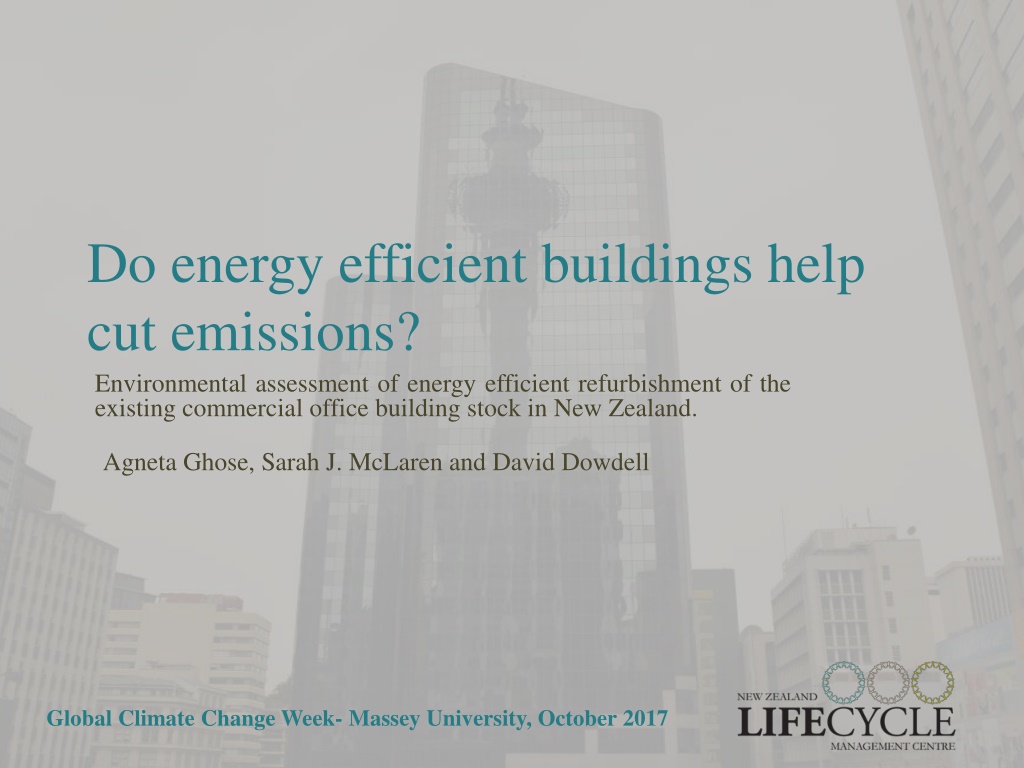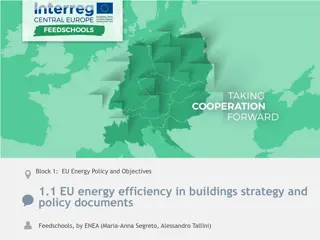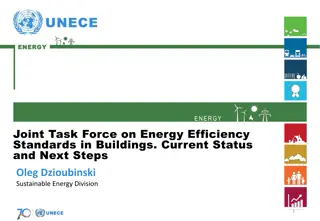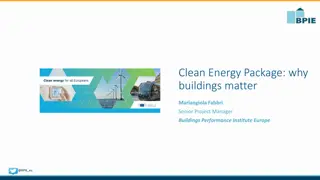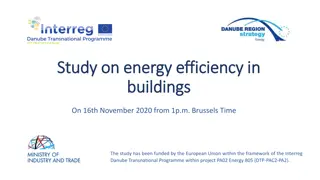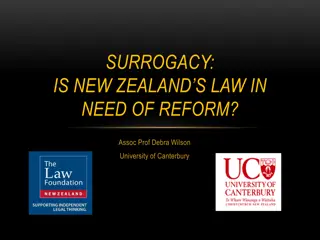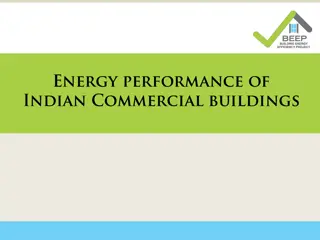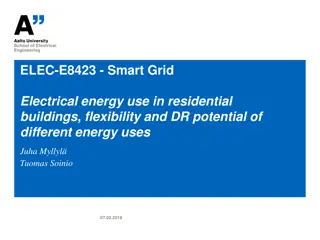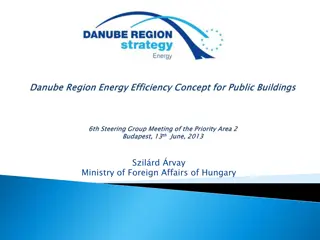Environmental Assessment of Energy-Efficient Refurbishment in New Zealand's Office Buildings
This study explores the impact of deep energy refurbishment in existing commercial office buildings in New Zealand. With a focus on reducing energy consumption and emissions, the research aims to identify potential environmental benefits and influences on building performance between 2017 and 2050. By targeting improvements such as insulation, window upgrades, and HVAC system changes, the goal is to address the energy-related greenhouse gas emissions from the building sector and contribute to New Zealand's sustainability goals.
Download Presentation

Please find below an Image/Link to download the presentation.
The content on the website is provided AS IS for your information and personal use only. It may not be sold, licensed, or shared on other websites without obtaining consent from the author. Download presentation by click this link. If you encounter any issues during the download, it is possible that the publisher has removed the file from their server.
E N D
Presentation Transcript
Do energy efficient buildings help cut emissions? Environmental assessment of energy efficient refurbishment of the existing commercial office building stock in New Zealand. Agneta Ghose, Sarah J. McLaren and David Dowdell Global Climate Change Week- Massey University, October 2017
Climate change and the existing building stock Building sector s energy use - 33 % of total global energy use; one-third of carbon emissions and other greenhouse gas emissions 60% of emissions related to building s operational energy use 38 % of the energy-related emissions in New Zealand s cities are due to the heating and cooling needs of commercial (office) buildings. NZ 2050 target- reduce energy related greenhouse gas emissions by 50% compared with 1990 levels. Annual energy use per capita by region and building type in 2007 (kWh/capita/ yr) Source: Data from IEA online statistics, 2007
Deep Energy Refurbishment- Major building refurbishment project in which site energy use intensity, including plug loads, has been reduced by at least > 50% from the pre- renovation baseline is described as a deep energy refurbishment (IEA EBC, 2015) -60% annual energy consumption 1. Reduce Wall to Window ratio 2. Change single glazed windows to low-e double glazed windows 3. Add insulation to walls and roof 4. Add solar shading on north, west and east facades 5. Change HVAC from boilers and chillers to Air source heat pumps 6. Change lighting devices from Compact fluroscent luminaires to LED luminaires Source: Cory, 2016
Research Objectives Identify the potential impacts associated with the adoption of deep energy refurbishment in the existing office building stock. Identify the potential environmental impacts or benefits associated with operation of the refurbished office building stock in comparison to non- refurbishment of the entire office building stock, in New Zealand between 2017 and 2050. Identify the potential influence of strategies such as resource and waste management or the installation of PV on the performance of refurbished buildings. Identify the potential influence of prospective changes to New Zealand s electricity generation.
New Zealand existing office building stock 5700 existing buildings (approx.) 7 million m2total office floor area (approx.) 80 % of the total office floor area was constructed pre-2000 (Cory, 2016) 75 % of the total exsiting office floor area is in the three major cities (Auckland, Wellington and Christchurch). Large buildings (>3500 m2) consist of 53 % of the total existing office floor area
Material and Methods Life Cycle Assessment Stock Aggregation Analysis
Electricity generation scenarios New Zealand s electricity grid mix (phasing out coal power in future) Refurbishment Strategies 1. Building refurbished based on status quo 2. Adoption of resource and waste management during refurbishment BAU Based on 2013 electricity grid mix 3. Installation of on-site PV on refurbished buildings. Based on Scenario 2040 mixed renewables
Results- Climate Change GWP in 2050 of whole office building stock with respect to New Zealand s 2050 target. The + and - signs indicate the increase and decrease in GWP as compared to 1990 emissions, respectively.
Other environmental impacts Impacts to toxicity Resource Depletion
2050 Climate Mitigation Target Refurbishing buildings in specific regions Refurbishing buildings of specific sizes
Interpretation and Implications Achievability of New Zealand s 2050 target with respect to the performance of existing office building sector Adopting energy efficiency measures should be promoted Grid electricity generation plays an important role in determining performance of the building stock.- National policies for increased renewable electricity generation should be promoted Substantial emissions are embodied in materials associated with refurbishment which lead to an increase in all environmental impacts in the year of refurbishment.- Future work required on the adoption of materials with low embodied impacts Best available resource and waste management measures contributes to substantial benefits across most environmental categories as compared to installation of on-site PV.- Promote waste management and planning Prioritizing the refurbishment based on building size or location can help in substantial emission reduction without increasing the embodied impact of the entire building stock.- Large buildings or building stock in major cities
Thank You! Acknowledgements Building Research Association New Zealand (BRANZ) New Zealand Life cycle management (NZLCM) Massey University Dissemination Grant
